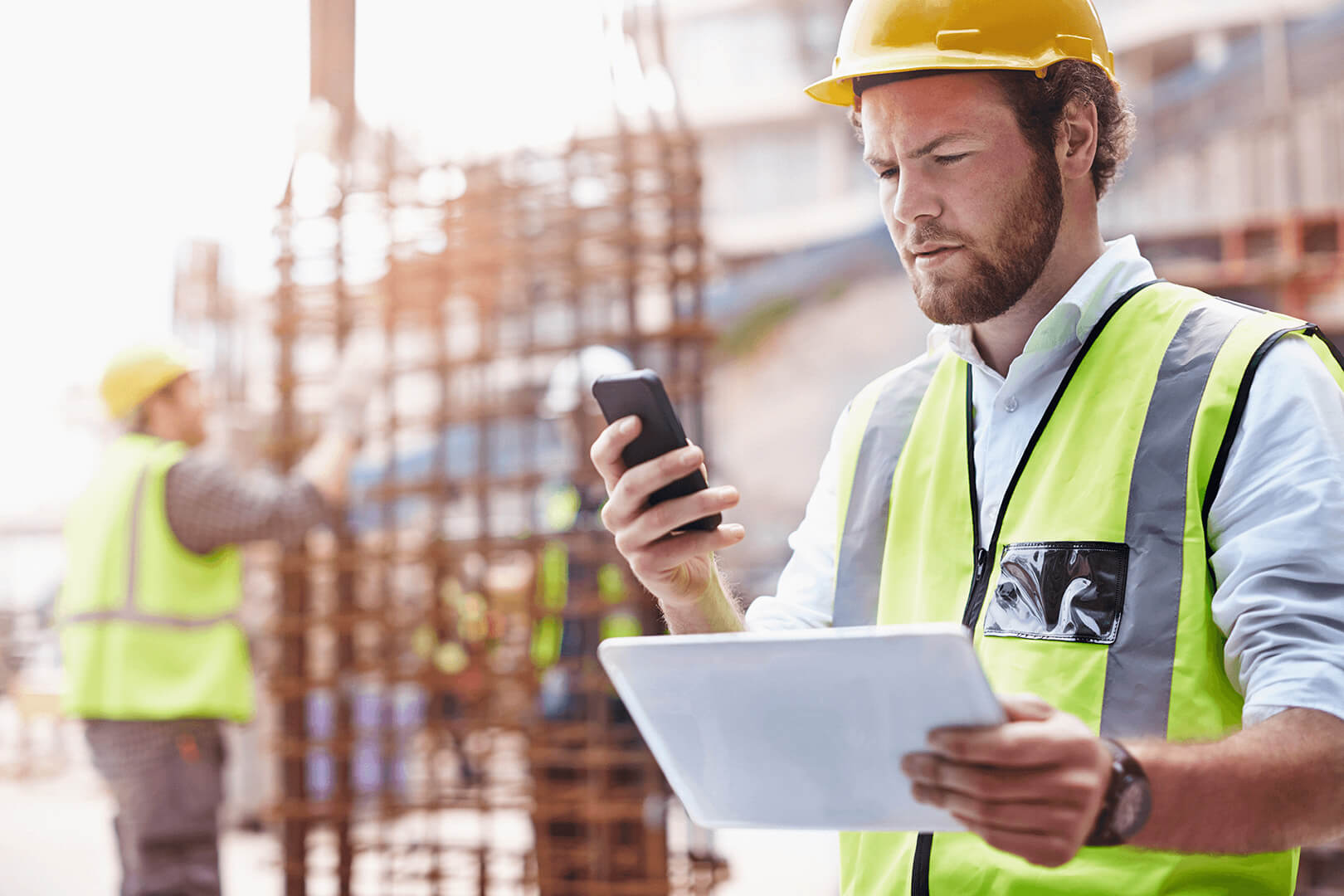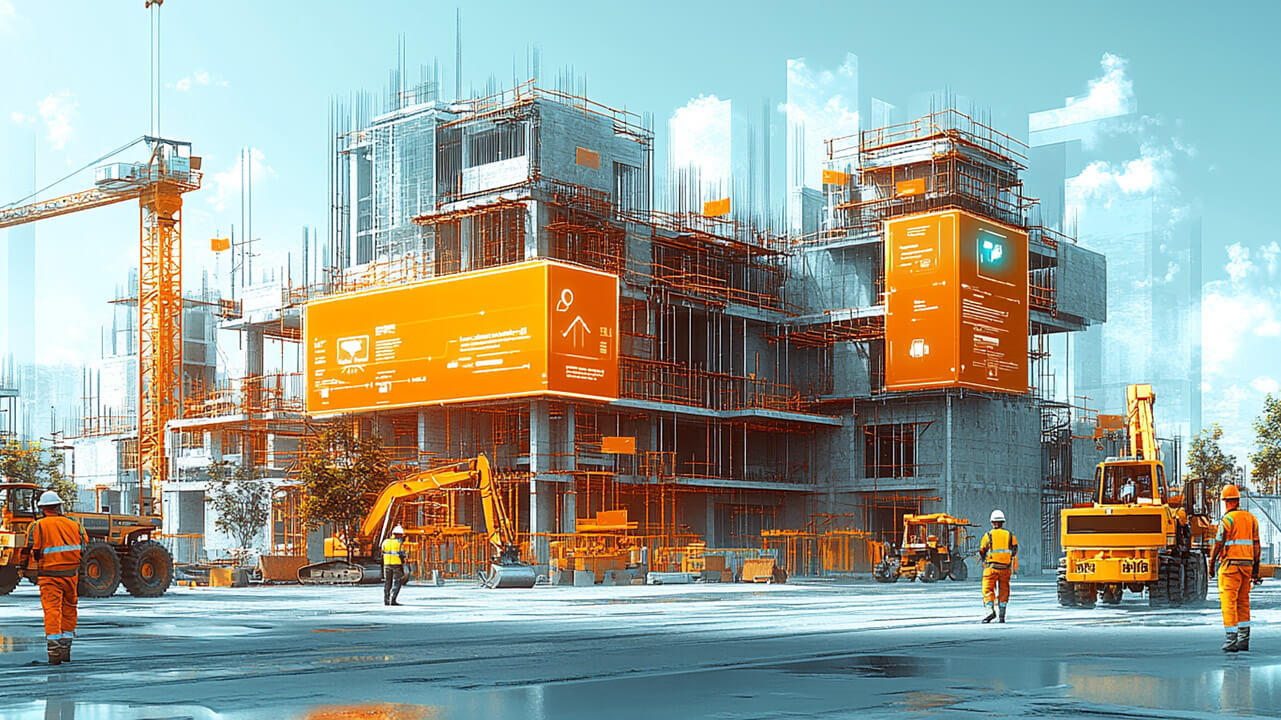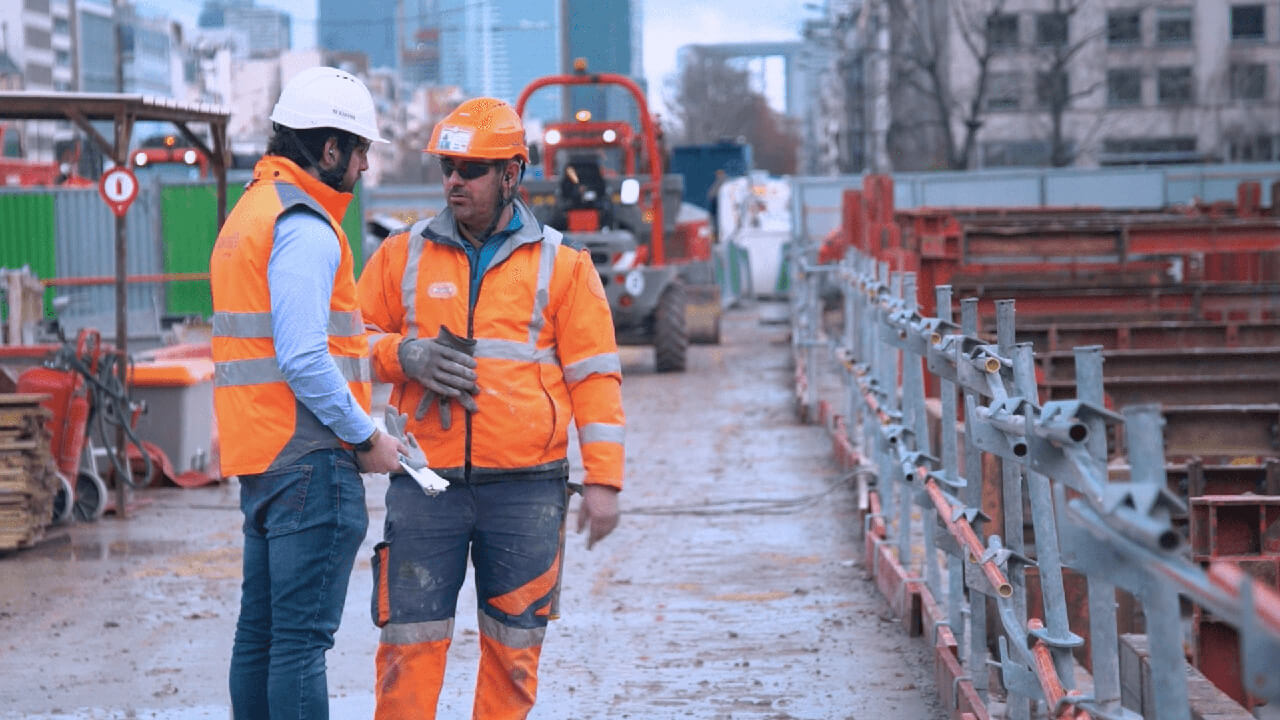5 key trends in construction safety technology in 2025
In this article, we will explore five key trends in software safety technology. These trends are shaping the future of construction safety management. Let’s dive in to discover how safety management innovation is paving the way for a safer work environment.
Quest for data driving safety apps usage
Mobile safety applications streamline safety-related processes. Activities may include risk assessments, inspections, permits to work, tool box meetings or incident reporting.
Safety apps first appeared a decade ago as mobile devices were becoming more common and affordable. Since then, they have improved significantly. Good safety apps are user-friendly and can be accessed from any device, even without an internet connection. The best apps offer full configuration, allowing them to fit the way workers operate in the field.
The benefits extend beyond just enforcing regulations. Safety mobile apps can gather precise and timely information from the job site. It matters as analytics and AI raise the need for accurate data. This “quest for data” will drive more use and acceptance of safety apps for data collection.
For this reason, we anticipate a dramatic increase in the use of safety apps in the next three years.

More tailored content for training
Many workplace accidents happen because workers are either too familiar with a task or lack experience. Digital solutions can assist in managing employee training requirement and monitoring adherence.
Have construction workers undertaken the necessary site inductions? Based on their level of experience and background, what training will help them perform their jobs and keep them safe? The best safety software helps manage credentials, certificates, and prior records. Learning management systems are also employed to streamline training procedures.
An emerging trend in safety software is the creation of custom training content, powered by generative AI. This tailored training makes learning more relevant and engaging for workers. By creating case studies and real-world applications, companies can better equip employees to adopt safety procedures. This strategy allows them to connect their training to real-world situations.
However, it’s essential to note that while AI can produce content swiftly, it’s not always 100% accurate. Therefore, human experts should always oversee the creation and validate the final product. We expect a significant surge in the development of safety training content over the next three years.
The rise of low-cost wearable safety technology
A ‘wearable’ is any device that is worn to keep workers safe. It can be as simple as a smartwatch that monitors your health. Or as advanced as a “smart vest” that works like an airbag in a car, protecting you if you fall.
Wearable technology has evolved over the past decade, but high costs have limited its usage to high value segments. In some areas, we are reaching inflection points where these devices start to be affordable. Connecting these devices to mobile apps and using the collected data for AI models is now adding extra value.
For example, smart safety shoes with sensors can track the wearer’s posture and movements. This is an exciting development in workplace safety. These shoes can warn users about unsafe positions or movements that might raise the chance of accidents. This feature helps create a culture of safety and awareness at the work site.
Smart helmets are also advancing rapidly, enhancing safety with new, data-driven capabilities. One of the leaders in this space is Beeinventor. Their Dasloop smart safety helmet features an anti-shaking camera for real-time video capture and streaming via 4G LTE or WiFi. It supports live calls and video conferencing for remote inspections, with secure cloud storage ensuring privacy. Additionally, the Dasloop smart safety helmet integrates internal audio capabilities, making it a versatile tool for safety and communication on construction sites. A gadget like this on site not only reduces expenses from occupational hazards but also streamlines operations, saving over 50% of supervision fees and significant construction costs.
Lower hardware costs and a growing demand for data will boost the use of wearable technology over the next three years.
Emergence of video analytics
Video analytics tools use smart technology to constantly monitor sites. For instance, they can spot when non-authorised individuals enter restricted zones or when workers fail to wear helmets. They also detect when workers are too close to moving vehicles. By analysing real-time video from cameras, these tools can quickly identify dangerous situations and enable rapid responses.
These systems are new but growing fast. To use them widely, they must be trained for accuracy and precision. They also need to follow personal data rules and not be viewed as intrusive monitoring tools. Some of the companies to watch out in that space are Invigilo and Ailytics.

AI construction safety
One technology everyone is talking about is AI, or artificial intelligence. AI can gather information, draw insights, and predict outcomes more quickly and efficiently than a person ever could. And with more digital tools gathering data, it is becoming easier to analyse trends and identify potential issues.
Imagine being able to look at past safety data to anticipate the future. You can combine information about workers experience, site conditions, equipment in use, and project size. This combination will help you predict the likelihood and severity of an event. This fantastic insight gives you the ability to put preventive actions in place, helping you keep workers safe.
While the technology is still gaining traction, its possibilities are truly inspiring. Novade is the leading software vendor in this field. They have created AI models that can predict accidents with an 80% accuracy rate.
We expect a dramatic increase in the usage of AI to prevent accidents on construction sites in the coming three years.

Using technology to improve safety on sites
We have looked at five innovative technologies: data-driven mobile apps, custom training content, affordable connected wearables, video analytics, and AI predictive models. These construction safety innovations improves compliance and efficiency while promoting a safety-first culture.
As the industry adopts more safety management technology, we can expect a safer workplace for everyone. We still have a long way to go to create an incident-free workplace. However, with everyone focusing on safety as a priority, it is possible.

Denis is the Novade CEO. He has 25 years of experience in construction technology. He has witnessed the adoption of digital technology in thousands of sites across the word. He is also involved in defining the digital strategy of the top companies in the industry
About Novade
Novade is the market leader for the digitisation of safety field processes. Every day, clients around the world rely on Novade applications to manage compliance and safety on sites
Interested to learn more about Novade?
READ MORE:

Streamline compliance and improve safety with data & AI

Using AI to predict accidents on construction sites

Enhancing construction site safety with CCTV cameras, mobile apps & AI
See how Novade can help your safety processes


